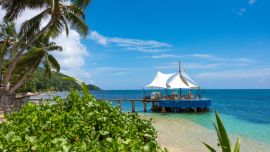Sports & Leisure
Snorkelling & Diving
The Seychelles are home to some of the world's most beautiful diving sites, and offer unique experiences to both experienced divers and novices. There is no one particular dive that makes the Seychelles such a distinctive option, but it is rather the many different impressions that makes this a unique diving location. You will encounter surprises during almost every dive thanks to the central ocean location. The islands are surrounded by numerous coral reefs, and, in the truest sense of the word, the underwater landscapes that can be explored around these granite rocks are unique.
There are diving centres on all three of the main islands, all of which are close to numerous diving spots. The 43 Inner Isles of the Seychelles are the remains of an ancient, sunken mountain range, lying on a flat plateau that offers a great variety of underwater life. Corals, colourful schools of fish, and sponges overgrown with reef await curious divers who want to explore the fantastic underwater world. There are some months when the plankton populations are particularly high, ensuring a high chance of discovering mantas and whale sharks. As the Seychelles have mercifully been spared mass tourism, you will likely be the only divers in your spot during your tour.
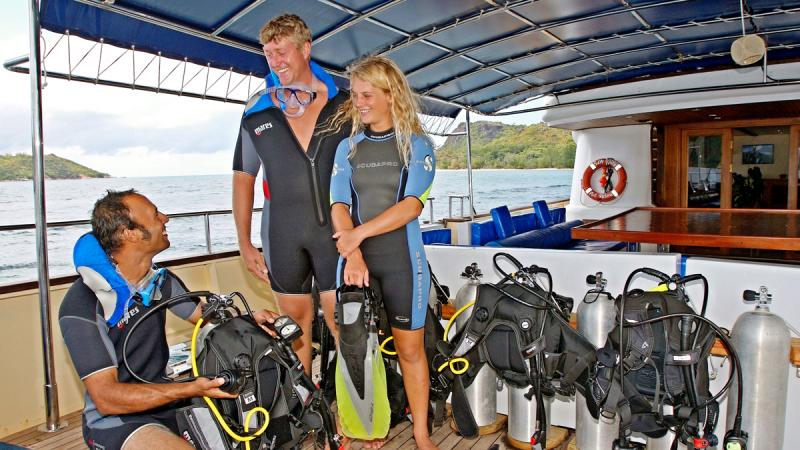
Diving in the Outer Islands is also a unique experience. Huge manta rays float with grace, gorgonians and red sea fan corals can be seen, colourful parrot fish glide through the water, and more. The underwater path leads past small ravines and some wrecks. The diving depths in the Seychelles vary, however - off the Inner Islands you can usually dive around 20 metres into the depths, while the Outer Islands allow double that, to 40 metres. The popularity of diving in the Seychelles means that there are now over a dozen diving schools where you can take lessons, book excursions, and rent the necessary equipment. Most schools are authorised to issue internationally-valid diving certificates. Please note, however, that beginners must show a medical certificate of fitness for their own safety, while practised divers should bring proof of their underwater experience. The best months for diving are March - May, September - November, when the sea is calmer and visibility is good, sometimes as much as thirty metres. Night-time dives in the Seychelles are another option.
Find out more about snorkelling and diving in the Seychelles!Sailing
The number of Seychelles islands worth seeing makes it difficult for some to decide where they would like to spend their Seychelles holiday. One option that provides a really good overview is to go on a cruise. The advantages are obvious: you can discover several islands, experience a varied, relaxing holiday, always be at your accommodation, and not have to book any transfers. Compared to the usual finding an accommodation, day trips to other islands, and transfers, this can also work out as a cheaper option.
Depending on the wind and the weather, catamarans or sailboats can take you around the islands of Mahé, Praslin, La Digue, and the smaller neighbouring islands. Here, you can dive through the water, relax under the sun, and enjoy stunning views in real-life and on-camera. At the same time, the cruises usually move at a relaxing pace for your mind, body, and soul.
Those who would rather take a cruise or rent a yacht on their own can either sail using their own boat, or hire one and take to the ocean for several days with or without a guide/crew. You can map out the route yourself, if you wish, but obtaining advice from an expert is highly recommended. It is, without a doubt, a benefit to have a local team on board, so as to not miss the most beautiful bays, the best diving spots, reefs, and other highlights.
Sailing within the Inner Islands is quite safe, but the areas around the Outer Islands are only for experienced captains, especially due to the shoals. To sail around the Amirantes and Aldabra you also need a separate licence. Sometimes, pirates from around the Horn of Africa venture further south into the Indian Ocean, so you should also inform yourself of the current situation before you set off.
Sunsail is a tour company that offers well-equipped and well-maintained boats for rental. In addition, sailors can enquire about special offers at various other suppliers or companies, for example Mason's Travel, Dream Yacht Seychelles, or Creole Travel Service.
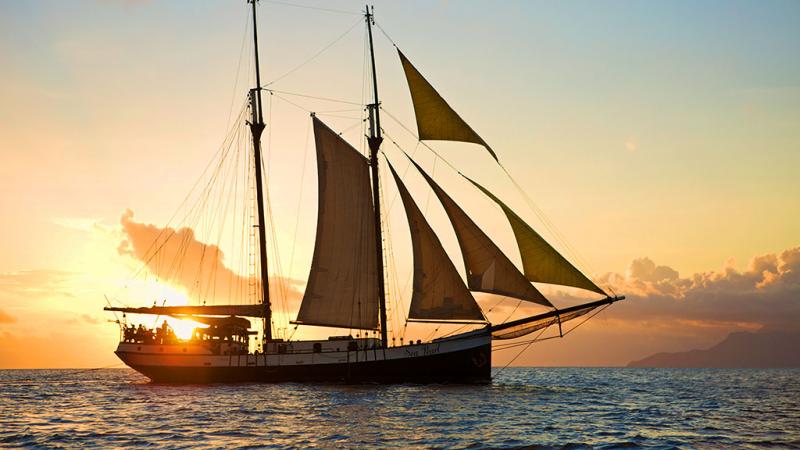
Hiking
Those who fly to the Seychelles often think of nothing more than sunbathing on the beach, diving in the ocean, and relaxing away from their daily life. However, these tropical islands are some of the few where hiking is also worthwhile. There are plenty of paths on the main islands, and most of the time you do not even need to look for them, as the tourist office has opened them up and signposted them. Throughout this development process, a small series of illustrated hiking guides was published with the Nature Trails. These not only describe the nature on Mahé, Praslin, and La Digue, but also focusses on the unique characteristics of the native flora and fauna. The booklets are available in Victoria at the Tourist Information Office and at the Botanical Garden.
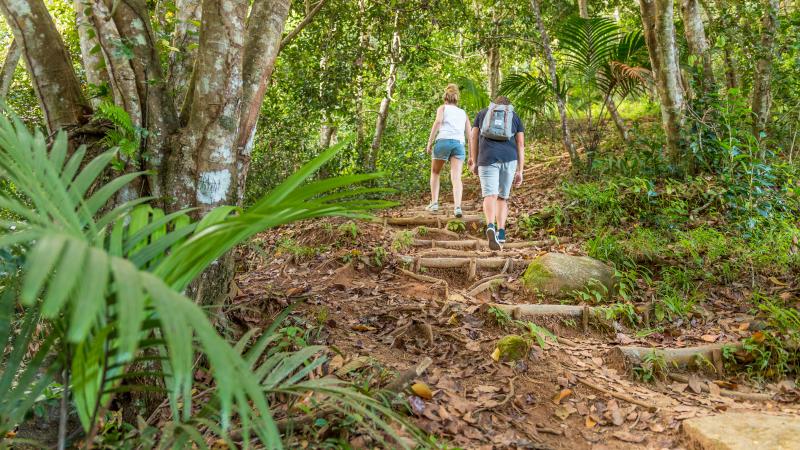
Hiking is especially good in the Seychelles from June to October, as these are the least humid months of the year. For some tours, it is recommended that you hire a guide. Even if the islands seem manageable in terms of size, you can easily get lost in the forest and amongst the rocks, and so some have to stay out in the wild overnight. In addition, the guides know the local flora and fauna very well, so can point out details that you might otherwise have overlooked. The guide also often brings along water, snacks, fruit, or can prepare a delicious barbeque on the beach.
If hiking in a group, you should, of course, choose the difficulty based on the abilities of the group's weakest member. For all hikes, head protection, sunscreen, and plenty of water should be brought along, in addition to a camera. Mosquito repellent can also be helpful here and there. In terms of footwear, the slippery paths and steep stages mean that well-lined hiking/sports shoes or trekking sandals should be used. You should also set off early in the day, as the temperatures are cooler then than at noon. For hikes to higher positions, check the weather conditions, too. Clouds hanging low around the peaks can also sometimes destroy the view that you had hoped for.
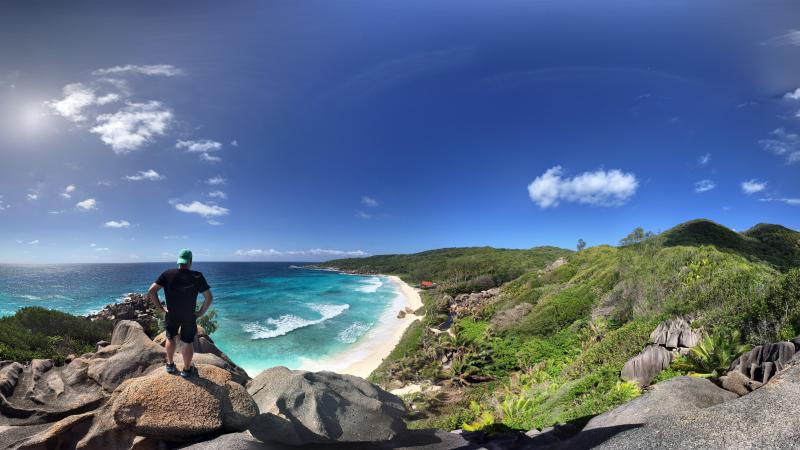
If you are going on a longer day trip, you should let your accommodation know when you expect to return. Please also remember that the descent can often be as tiring as the ascent, so turn back before you become exhausted. Detours should also be calculated into your time so that you are back at your accommodation before dusk. If you would like to book a tour guide, you can contact the Survey Division of the Ministry of Land Use and Habitat, travel agencies, or your hotel. (Survey Division, Independence House, Victoria, Mahé - tel. +248 428 4444).
See an overview of all hikes in the Seychelles!Angling & Fishing
The waters of the Seychelles are home to some of the world's richest fishing grounds, making fishing here a unique experience. In fact, making the catch of your life is a realistic option during your Seychelles holidays. Sensational trophies such as sailfish and barracudas, marlin or rainbow mackerels make the archipelago an exciting choice for experienced fishing enthusiasts as well as eager beginners. The months from June to October are best for deep-sea angling, while the rest of the year is good for fly-fishing and normal fishing.
The variety of charter boats and fishing excursions allows you to adapt your tour to your own wishes. The best option is often to ask the owner of the boat whether there are any local fishermen who can join you on the tour. They can then help you catch perch, wrasses, and snappers from the boat, some of the most delicious fish in the world.
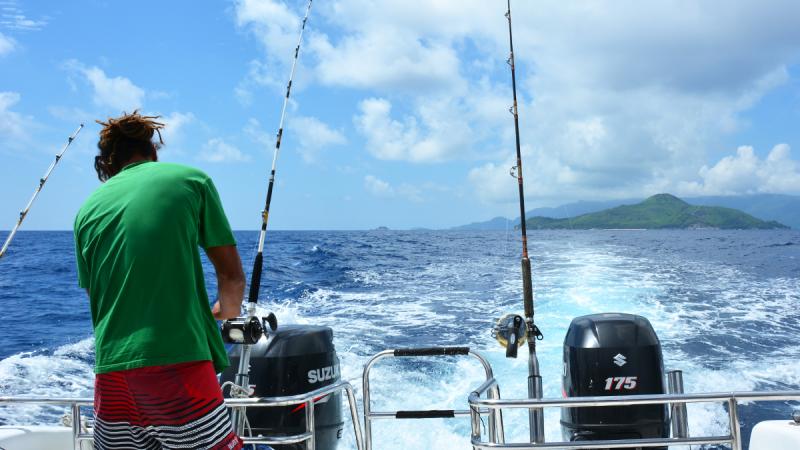
You will likely struggle to find fishing gear in the Seychelles, so it's a good idea to bring your own equipment. For fishing trips, your tour company will likely provide the equipment. In terms of locations, the waters around Silhouette are considered to be particularly good choices for fishing; you can catch sailfish here throughout the year. Experts also recommend the wealth of fish around the coral islands of Bird and Denis, near to which the seabed falls steeply off the reef. Sharks, tuna, marlins, bonitos, and many other species look for food here. Far in the south of the archipelago, it is becoming more and more popular to fish on the shallow sandy beaches around the coral islands that lie there, particularly fly-fishing. A secret insider's tip for fly-fishing is the Saint-François Atoll lagoon, in the Alphonse group. That said, the main islands, especially Praslin and La Digue, also offer excellent fishing conditions and wonderful views.
To go fishing in the Seychelles, you do not require a fishing license. Of course, anyone wanting to fish here must comply with the local conservation regulations. In some areas, for example the national marine parks such as Curieuse and Sainte Anne, fishing is prohibited or restricted, and rangers patrol the waters here to keep order. It is also common for Seychelles fishing enthusiasts to let the fish go once they have caught them, alive, into the sea. In addition, the use of harpoons is prohibited in the Seychelles.
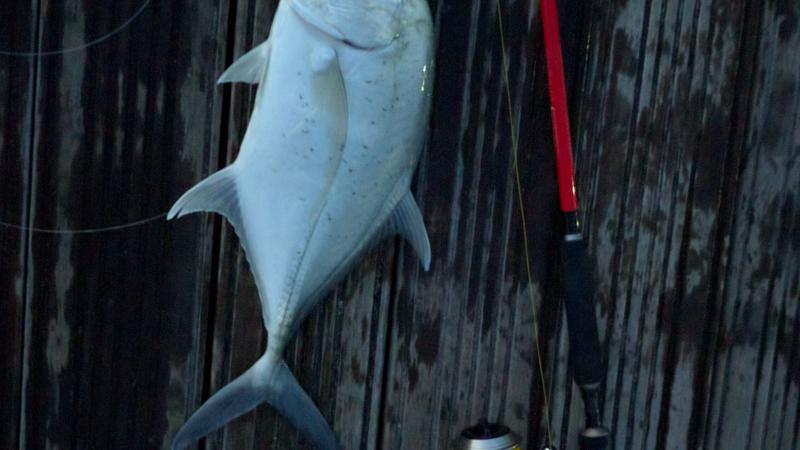
The Seychelles are home to a number of fishing competitions over the course of the year (see Festivals & Celebrations). The IGFA Fishing Tournament, which takes place in the second week of October, is especially exciting for foreign participants. Responsibility for the promotion of fisheries and the conservation of resources falls under the jurisdiction of the semi-national Seychelles Fishing Authority (SFA).
Golf & Tennis
Despite their tropical, isolated location, the Seychelles allow you to golf in warmer climes than many are used to, with stunning panoramic views that will be sure to distract you from your putting! A nine-hole course can be found on Mahé, the Seychelles Golf Club, located at Anse aux Pins (tel. 43 76 234 - open daily: 8.30 - 18.00). Guests are allowed to play, and can acquire temporary membership during their stay. The other option is the eighteen-hold master course behind the Lémuria Resort on Praslin. This course is so unique and beautiful, as the fairways stretch along palm-lined beaches and through a dense forest. Non-hotel guests can access the course, where training courses of all levels are also available (tel. +248 428 1230, www.lemuriaresort.com).
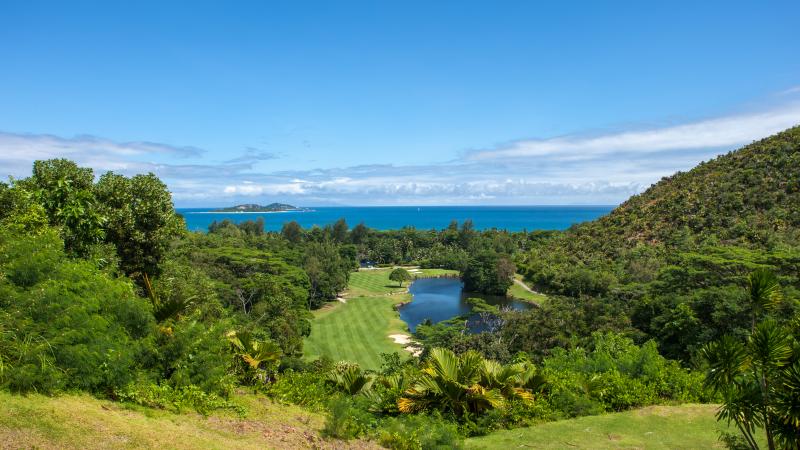
Many of the Seychelles' larger hotels also have a tennis court. You should bring your own raquet if you have one, however, as the ones you can rent from the hotels are often old and not particularly high-quality. In the Berjaya Beau Vallon Bay hotel on Mahé, as well as the Lémuria Resort on Praslin, non-guests can play too, for a fee. If you are interested, simply enquire at the hotel reception.
Cycling
The Seychelles islands lend themselves particularly well to being explored from the comfort of a bicycle. You can rent bikes on La Digue and Praslin. La Digue is especially good for cycling, as there are very few cars there, and most of the accommodations also have their own bikes to rent, as well as child seats.
Prices range from €5 per day to €10 per day, depending on the rental period and the condition of the bicycles themselves. Generally, the bikes will be stable and robust; mountain bikes are usually a good choice because not all of the routes are paved. We recommend checking the bike's tyres, steering, and brakes before setting off, especially if you are planning a longer tour. That said, don't expect too much from your bikes because the tropics, the salty sea air, and the constantly-changing users put them under constant pressure. The bikes are also not illuminated, so if you want to drive in the dark you should equip yourself with a headlamp.
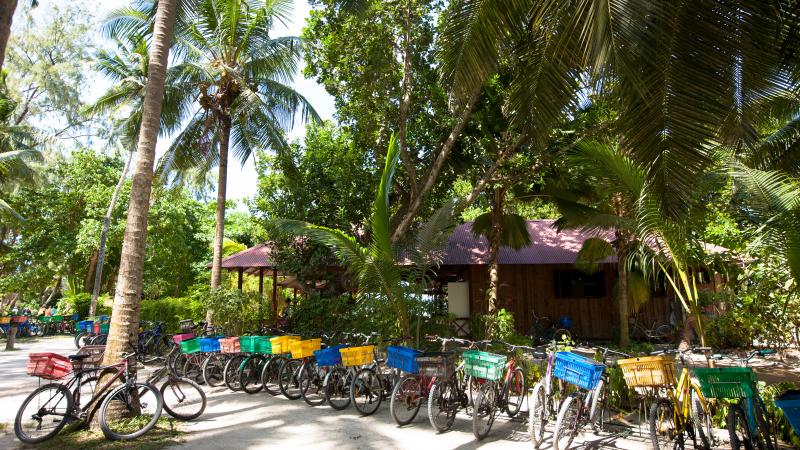
Inexperienced cyclists, especially, should be prepared for the tiresome rides across bumpy paths with tropical temperatures and high humidity. Taking water and provisions along with you, as well as frequent breaks, is a good idea.
Please note: even with bikes, you should ride on the LEFT on La Digue! On Praslin, the roads are sometimes narrow and have steep drainage channels at the edge that you should watch out for.
Horse Riding
On Mahé, you can experience the joy of riding on horseback, a particularly unique experience when riding across a pristine, white beach. Anyone who wishes can do this at http://www.turquoisehorsetrails.com/>Turquoise Horse Trails, near to Anse Barbarons (tel. +248 263 8850). This is the island's only riding stable. You can go on a guided tour here from €50/person.
In the early morning or the early evening, the conditions are particularly good for horse riding, as you won't find anyone else on the beach. It is great fun to trot along the beach or ride through the tropical rainforest, while the stables also offer romantic picnics for couples. They can also provide their horses for weddings or photoshoots upon request.
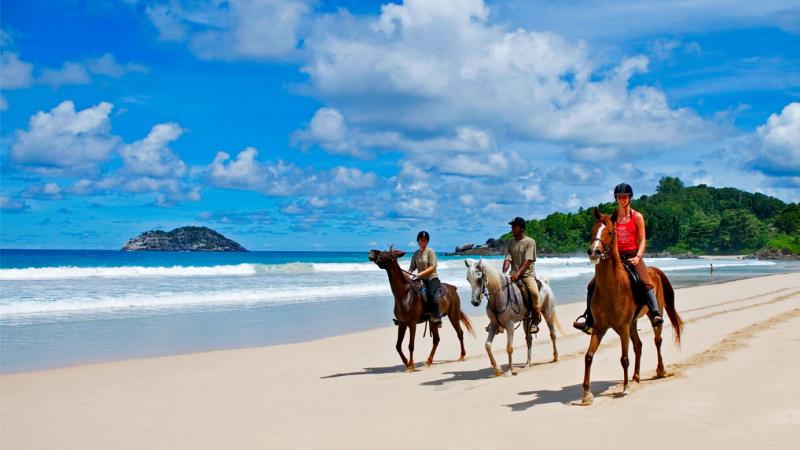


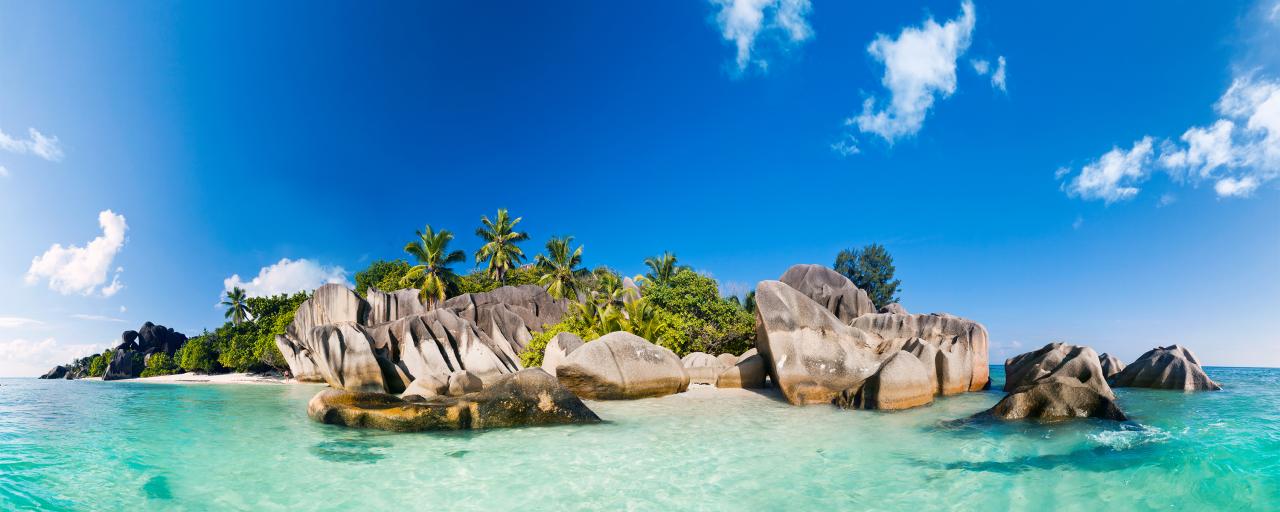
 Certified Seychelles Experts
Certified Seychelles Experts
